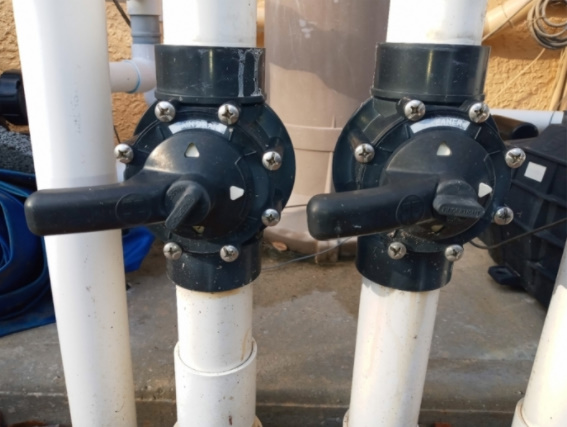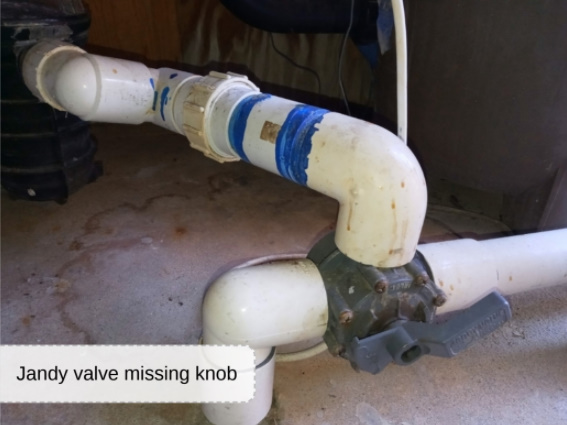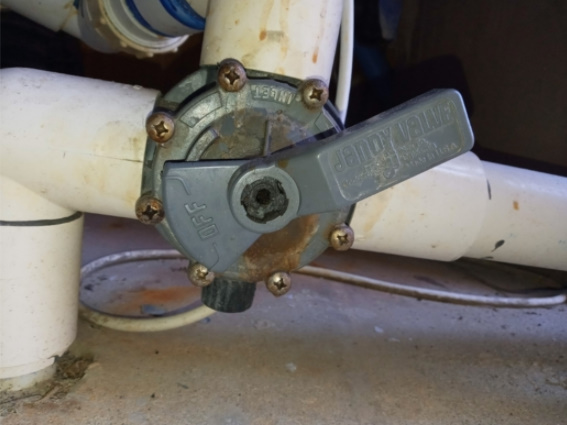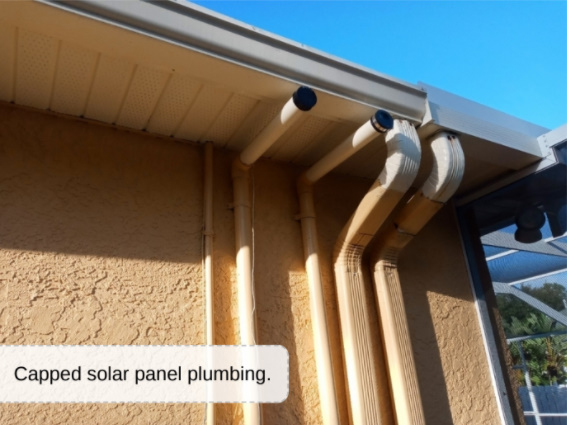Know Your Pool Valves and What They Do
Swimming pool valves might not be the hot topic at next Thanksgiving Day dinner, but understanding your pool water's circulation system can be helpful. Filtration and circulation is the heartbeat of pool maintenance. You may have questions such as what to do if you want to divert water from one place to another, or how to stop the water flow from a certain part of the plumbing. We're going to dive into the pool's circulation system, and that starts with the pool's valves.
What Are Pool Valves?
Filtration and circulation of your pool water is the key to maintaining a healthy body of water and keeps it free from debris and contaminants. If the pool water didn't flow through the filter, your pool water would start to look like a swamp. Water flows in and out of the pool, and through the pool equipment. Pool valves help with this process to keep everything moving in the right direction. Think of valves as the gatekeepers of the pool's water flow.
The valves are an important part of my pool inspections. I check for leaking and the integrity of the valves, among other things.
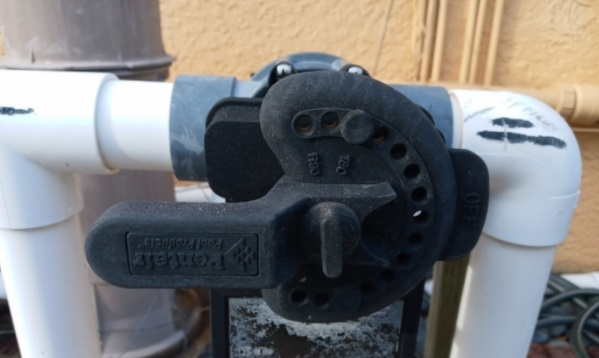
Types Of Pool Valves
The type of pool valves are wide and varied and perform different functions. For this application, we'll look the most common types of valves and they are:
- Multiport Valves
- Diverter Valves
- Check Valves
- Valve Actuators
Multiport Valve
Multiport valves are found on most sand and D.E. filters. This type of valve has a handle on top and allows you to turn it to the setting of your choice such as FILTER, BACKWASH, RINSE, etc.
Your multiport valves also offers the important option of RECIRCULATE. Why is this important? The RECIRCULATE setting is to keep your pool water circulating without filtering it. This setting allows the chemicals to circulate faster and is a good option for those times that you might want to use a flocculant to help clear up your pool.
Diverter Valve
Diverter pool valves allow you to divert, or redirect, the water flow from one area of the plumbing system to another. The two types of diverter valves are:
2-Way Valves: These controls are plumbed in from both sides of the valve and lets the water flow to or from just one port. They can completely turn off one side of the water flow while allowing the other side to fully flow, or you can choose partially on or off water flow. The most common brand for these types of valves is called a Jandy Valve. The 2-way valve picture below is from a recent pool inspection I did.
3-Way Valves: It's similar to a 2-way valve, only this one gives you a little more flexibility. A 3-way valve has one inlet and two outlets. This lets you partially or fully close off one end of the valve while allowing the other 2 ports to remain open. These types of valves can be used to partially or fully turn the bottom drain or skimmer off, through one port or the other. The pictures I took below are from one of my pool inspections. The knob was missing off the 3-way valve. This knob allows you to tighten the handle down to its desired location.
Check Valves
My opinion is that check valves are one of the most important valves to have. In effect, these valves are installed to prevent the backflow of water. When the pump motor turns off, there's nothing to stop the water from flowing backwards. To stop this from happening, a check valve should be installed.
You might have some check valves on your pool system. If you do, give yourself a big pat on the back. Let’s look at some places that a check valve might come in handy.
Water Features
Fountains, waterfalls, and other similar features should have a check valve installed. The water being used probably comes from the pool, but it can also draw water directly from a contained reservoir. Installing a check valve here will stop the reservoir water from going back into the pool.
Solar Heaters
Solar pool heaters and panels are usually positioned on your roof. When the pumps turns off, the water from the solar plumbing will flow backwards into the pipe. This is done by gravity. Adding a check valve helps prevent this backflow from happening. As you can see from the picture below, the solar plumbing lines were capped off. I noticed no check valve was installed in the solar heater plumbing.
Automatic Chlorinators
An automatic chlorinator could be either a salt chlorine generator or a chlorine tab feeder. These units are installed as the last piece of equipment. Being they inject a high and concentrated does of chlorine into your pool, they should be fitted with a check valve.
Our pool filter and heater are not designed to handle such a high dose of chlorine. As we now know, check valves do not let water flow backwards and can be the last line of protection for our pool equipment.
Valve Actuators
Alright, we're almost finished with our pool valves. One more to go, but first a question: who doesn't like automatic things? By a push of a button, our problem is solved. Why spend all that time turning valves when you don't need to? If you're like me, you like things that are easy, and a valve actuator is the way to go.
You can install valve actuators on top of the diverter valves and hard-wire the actuators to your pool’s control box. If you need to redirect the water flow, simply push a button and its done for you. This can save much time and frustration. It's really a simple set-it-and-forget-it piece of equipment.
When To Replace Pool Valves
Age and friction causes things to wear out, and your pool valves are no exception. Check your valves for signs of wear. If your valves are up there in years, now might be a good time to replace them with brand new ones that will last for years and years.
Be A Pool Valve Pro
Isn't it amazing that such a small piece of equipment can be to the well-being of your pool. Don't underestimate the essential part of your pool valves. Keep an eye on them and they'll take care of your pool for years to come.
